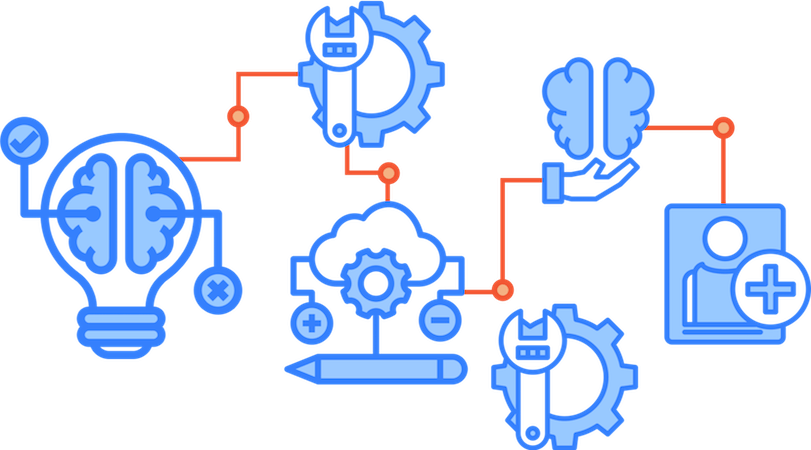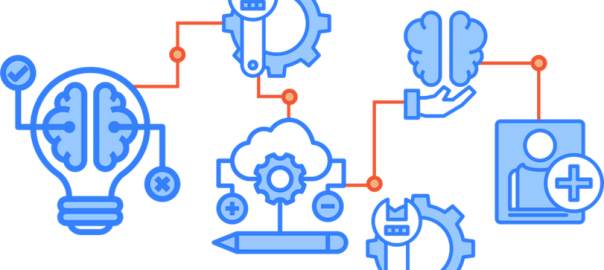— April 22, 2019

We all know how important it is to make a good first impression. Countless job interview tips cover this exact topic with advice as diverse as the right dress code to the correct tone of voice. Yet, companies don’t always focus the same care or concern on how they can make a good impression on an employee’s first day of work.
A smooth employee onboarding process is one of the best ways to welcome a new employee to your company and start building a great foundation for a lasting, mutually beneficial relationship. Although an employee has agreed to join your team, their first few days, weeks, or months with you can be the deciding factor in whether they stay for the long run or leave shortly after joining.
When you consider that the average U.S. employer spends about $ 4,000 and 24 days to hire someone new, the onboarding process becomes about more than just making a good impression–it’s an essential investment for your company as a whole.
To really drive this point home, these costs continue even after hiring. For a new employee to reach full productivity, it can take 8 to 26 weeks depending on the position level, and lost productivity from the learning curve for new hires was between 1-2.5% of the company’s total revenue.
The consequences of ignoring the onboarding process aren’t anything to laugh at either. Research shows that there’s a 20% turnover rate during the first 45 days at work for a new employee. This means that a successful onboarding process is crucial for employee retention because a negative impression in the first month and a half can prompt someone to leave. Furthermore, those who attend a structured orientation program are a whopping 69% more likely to stay with a company for longer than 3 years. According to a study by the Aberdeen Group, these employees also tend to be more productive and engaged at work.
What makes a successful onboarding process?
It’s easy to fall into the trap of viewing the onboarding process merely as taking care of paperwork and logistics. While this is undoubtedly a vital part of the process, there’s much more to onboarding than your standard forms, policies, and other legalities.
A truly well-thought-out process integrates the administrative with the informative and casual elements of taking on a new person on the team. The priority should be about making sure that this person understands exactly what is expected of them in an approachable, welcoming way.
Whether they’re filling out a tax form, signing into an internal CMS, or simply chatting at the water cooler, minimizing the natural disorientation that comes with entering a new place of work can go a long way in making the process smooth and easy on all sides.
That said, let’s take care of that paperwork
There’s no denying that filling out an overwhelming amount of paperwork is a necessary part of the whole onboarding process. In fact, it’s often the first thing an employee is tasked with for legal reasons. Without signing agreements and understanding employee guidelines, they can’t officially start performing the work they were hired for.
So without further ado, here are some basic types of paperwork you’ll need to provide:
- W-4/W-9/1099, etc: It doesn’t matter if you’ve hired a part-time contractor, a consultant, or a full-time employee. These tax forms need to be filled out right away so that your company complies with the IRS codes. This is the first thing employees will need to sign so that they can get paid and give you their tax information. The form you need will be different depending on the employee status. The W-4 is the standard form for a full-time employee while a 1099 is used for contractors.
- Employee handbook: Any company should have its own code of conduct and set of guidelines that apply to all employees. It’s important that new hires understand these rules, which is why many employers expect them to read and sign it on their first day at work. Encourage employees to take their time with the document so they don’t rush through it or get intimidated by the list of don’ts.
- Non-disclosure agreement (NDA): To protect your company’s work from competitors, or to keep confidential information private, your company might have an NDA drawn up for all employees. Before starting any sensitive work, it’s essential for new hires to sign an NDA and understand the nature of the agreement.
- Banking details: The last thing you want to do is not to pay your new employee on time, as that can leave a very sour taste during their first month. Individual companies will have different methods of payment, from direct deposit to checks. Regardless of the method, make sure to get their banking details right away so that payday isn’t delayed for the new hire.
Use automation to handle the load
The amount of paperwork the employee is required to fill out on the first day can be tedious and overwhelming. No one likes to sift through piles of paper for hours on end, especially ones filled with legal jargon.
Rather than having to deal with a paper trail and squinting over various scribbles and illegible handwriting, streamline the process with automation software which can shorten the timeline and provide relief to both parties.
Modern HR automation solutions come with pre-designed templates and easily customizable forms that any HR person can visually modify to suit your unique business requirements. Since there’s no need for a developer, any changes that come up can be dealt with at once without further delay.
These online new hire forms are easier for employees to fill out with helpful tips right at their fingertips instead of having to visit HR. The paperwork can also be completed from home even before the new employee walks in the door on their first day. Online forms can also be sent automatically to the appropriate department for review and stored in the cloud for 24/7 access.
Design an engaging employee orientation program
There’s a reason why the biggest companies in the world have some sort of structured orientation program in place. These programs don’t have to be rigid and dry in nature. Rather, think of them as a way to give employees all the information they need in an easily digestible manner.
Employees actually care a great deal about knowing what’s expected of them, as it’s one of the biggest factors that contribute to employee satisfaction. This is especially true for new hires who might not yet grasp the precise parameters of their new job.
Clear communication from the get-go can save businesses a ton of headaches down the road as studies show that companies lose $ 37 billion annually because employees do not understand their jobs. This is an avoidable problem that can be corrected through an orientation that lays out their duties, backed by follow-up sessions for anyone who still has questions or concerns about the work.
If you can address these basics early on, not only will the employee rest easier knowing their tasks, but it will also benefit the company in the long run. Here are some things you can include in an orientation session:
Give them an onboarding checklist
Dealing with the paperwork alone can throw off the most organized person but new employees face much more than forms during the onboarding process. To help them get through the process with ease, give them a checklist so they can follow it as they cross off the tasks one by one. A to-do list sets clear guidelines on what they’ll need to do and when.
Set them up with all tools & software before the first day
One of the most confusing things for a new employee is getting used to any internal or external software the company uses to work and collaborate. Getting an ID or email address assigned, setting up passwords, and accessing systems is a process best addressed before the employee even gets to work on the first day. That way, rather than spending the day trying to log in and set up dashboards, they can spend the time learning how they work or start using them right away. All the necessary information can be included in the checklist to make it more comprehensive.
Implement a buddy system
If all of the above seems overwhelming, it’s because it can be. That’s why assigning someone on the team who is dedicated to helping the new hire can work to everyone’s benefit. When you don’t know anyone on the team yet, it can be hard to approach them for seemingly small questions. By assigning a specific person to the new employee, they’ll always know where to go for more information.
Make sure you have a welcome strategy
When Microsoft studied employees who had one-on-one meetings with their manager on their first week, they came across several positive findings:
- 12% larger internal network within the company
- Higher-quality meetings overall
- Three times as much time spent on team collaboration
The results showed that those who felt more welcomed in this capacity turned out to be more productive and engaged employees who made a positive difference within the company by interacting more with other team members.
A welcome strategy should be a part of any onboarding process, whether in the form of one-on-one meetings, a buddy system, or a happy hour. However, the Microsoft example shows that when employees are encouraged professionally, they’re more likely to contribute and stay engaged with their work.
At the end of the day, new employees want to feel valued for their skills and experience. By encouraging them to speak about their concerns, provide feedback to management, and most of all, by listening to their inputs, you integrate them into the team faster.
Conclusion
A successful employee onboarding process is a win-win for both employee and employer that gives you the following benefits:
- Increased employee engagement
- Increased employee retention
- Increased team collaboration
- Decreased costs on turnover rate, hiring costs, productivity costs
Coming up with an onboarding process that works requires both understanding the new employee’s needs and the systems that can speed up things for the company. By combining the human elements with automated processes, you can have an employee onboarding process that works for both the company and the employee.
Business & Finance Articles on Business 2 Community
(80)





